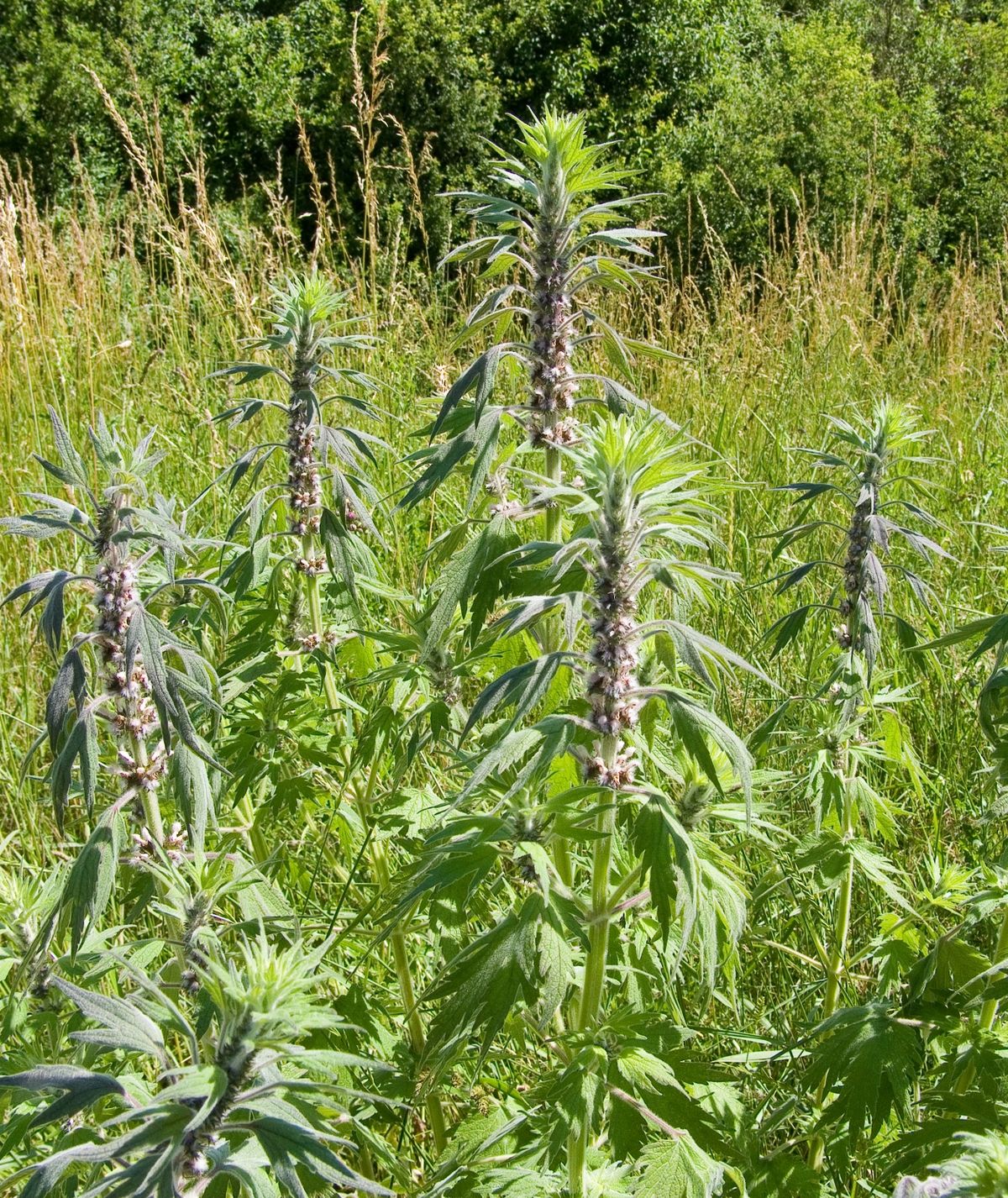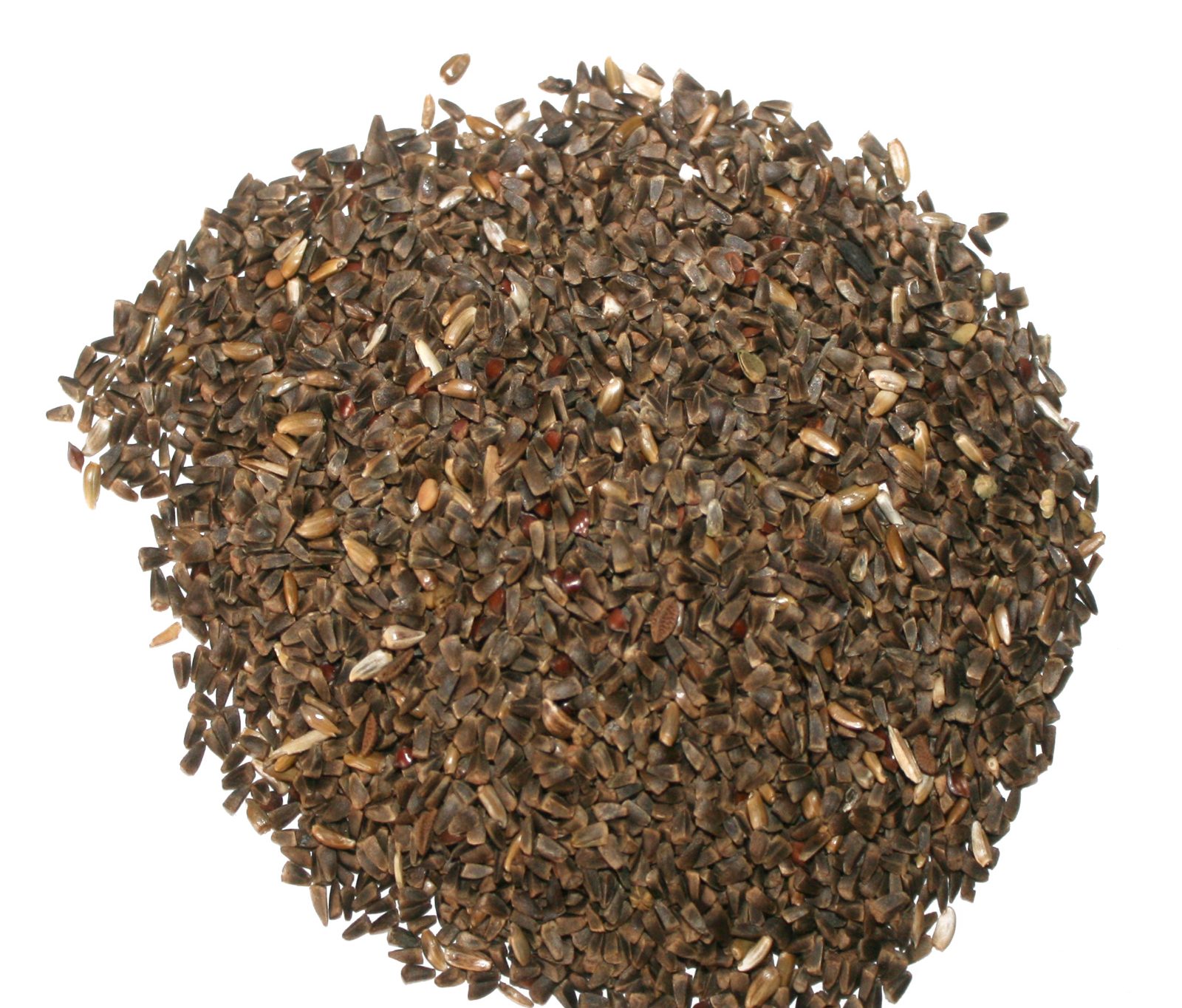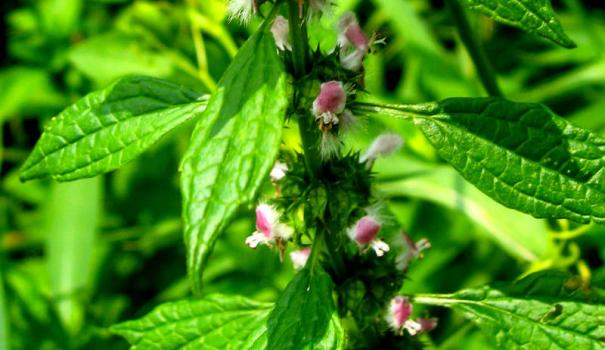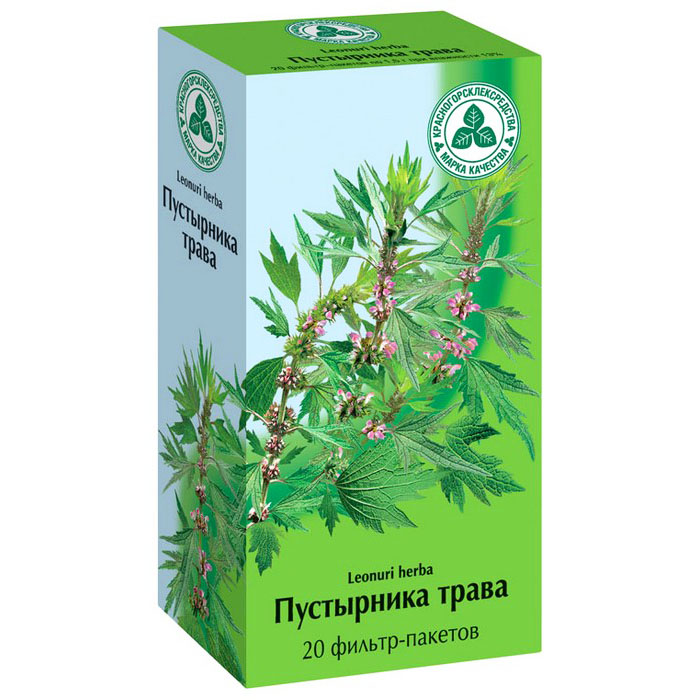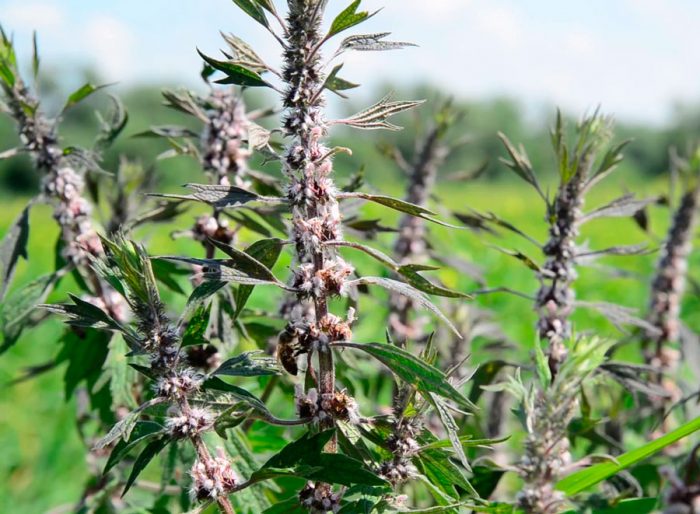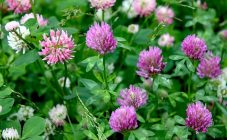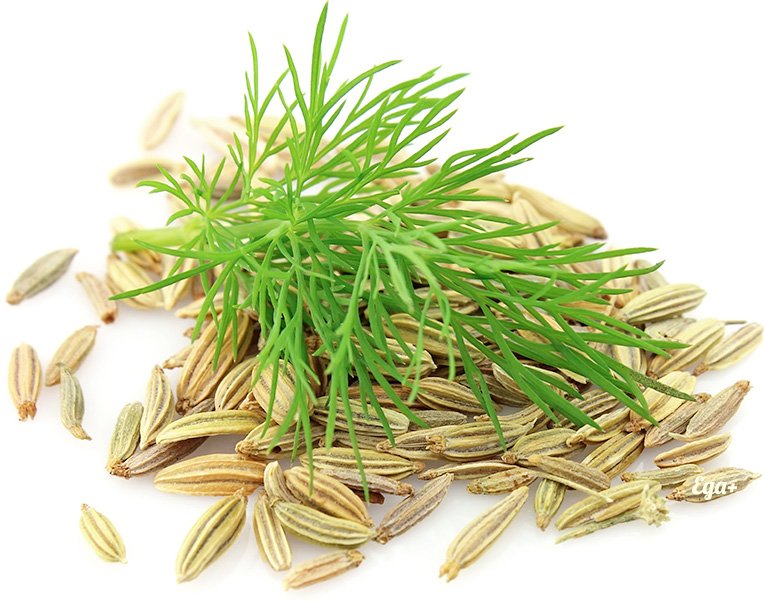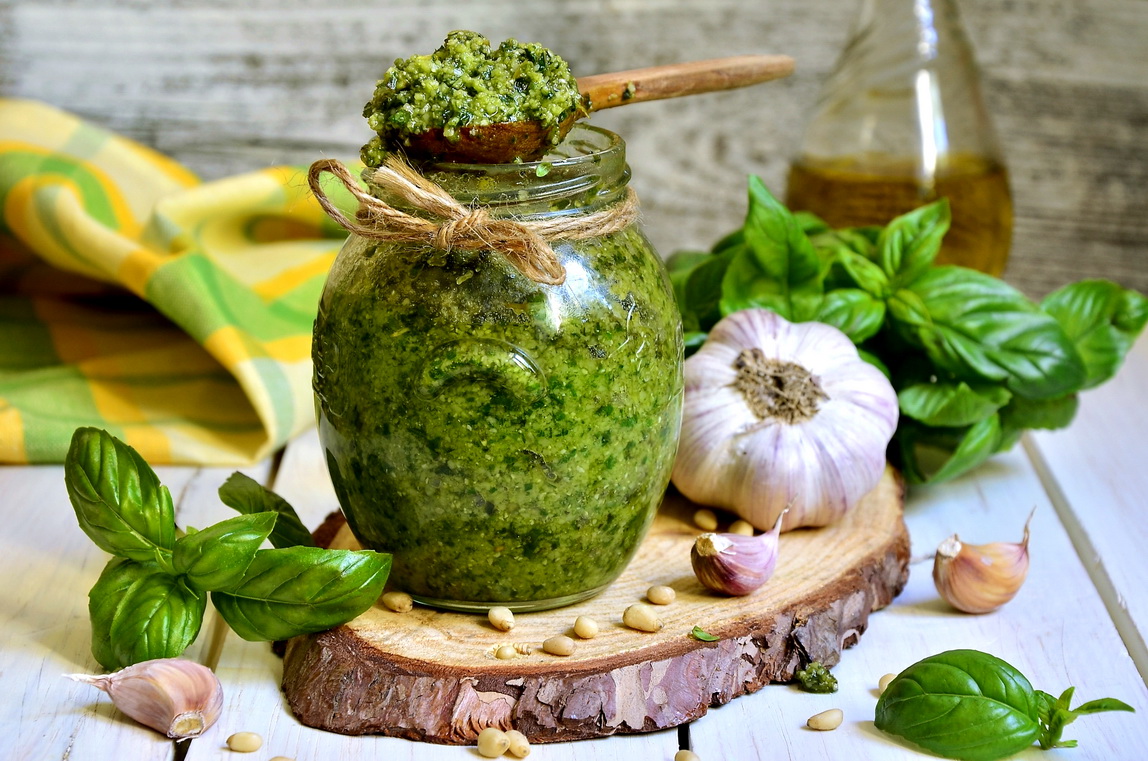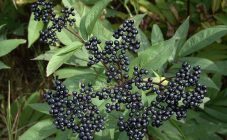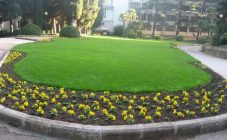Content:
Motherwort herb is a popular medicinal plant for the treatment of neurological and cardiac pathologies. Its use has a sedative effect. The brewed herb relieves tension, soothes in a stressful state, helps to normalize sleep, lower blood pressure, regulate the heartbeat, and smooth the symptoms of vegetative-vascular pathologies.
Description of culture
Motherwort (Leonúrus) is a plant from the Lamiaceae family. The motherwort genus is a perennial herbaceous culture.
What does it look like
The stem is straight, branched, pubescent, hollow, tetrahedral, up to 2 m high, reddish in color.
The leaves are opposite, petiolate. Their size decreases gradually towards the top of the stem. The lowest leaves are 5-7-finger-separated, the subsequent ones are smaller: tripartite, triple-lobed, at the very top they are simple, with two teeth.
Flowers are small, two-lipped (diagnostic sign), pink-purple hue. In some species, they are white, growing from the axils of the upper leaves. The flowering period is June-September.
The fruit looks like a cup with four-sided dark brown nuts.
The plant has many names that describe its appearance, healing benefits - woolly motherwort, hairy motherwort, hairy motherwort, dog nettle, core, chicken footprint, wild nettle, dead nettle, heart grass.
Where grows
Massively grows in the Middle East, Central Asia, most of Russia, Ukraine, Belarus. It is cultivated as a medicinal herb in many countries.
In the wild, it grows, confirming its name, along roads, on the slopes of ravines, in abandoned summer cottages and in gardens.
Varieties and varieties
The motherwort genus consists of 24 species. In Chinese alternative medicine, some varieties of plants are popularized as medicinal, in European countries, traditional medicine uses completely different ones.
The following species are cultivated in Russia:
- The gray motherwort is a low gray bush with dense pubescence with hairs pressed to the bottom. The flowers are light pink.
- Motherwort Tatar has a long edge along the upper part of the shoots. The leaves are thin, dissected, the flowers are purple-pink.
- Motherwort ordinary (motherwort cordial) is covered with long protruding hairs, the height of the shoots is up to 2 m. The size of the leaves from the bottom to the top is gradually decreasing, the flowers are pink.
- Motherwort five-lobed (motherwort hairy) differs from the previous one in that the leaves are five-lobed below and in the middle of the shoots, the upper ones are three-lobed. The stem is covered with long protruding hairs, increased pubescence.
In total, 15 types of herbs have been thoroughly studied, and the following are permitted by the pharmacopoeia:
- cardiac (Leonurus cardiaca);
- five-lobed (Leonurus quinquelobatus).
Growth features
Both species grow around abandoned ruins. Hearty motherwort grows absentmindedly, on wastelands, fallow lands. Five-dangerous grows in groups among overgrown shrubs, on forest edges, forest belts, meadows.
They thrive on nitrogenous, sandy-clayey soils due to branched roots. Plants are resistant to drying out of the soil, not demanding on its composition.
How does it multiply
All species of motherwort reproduce by seeds. To improve germination, they are stratified for 60 days. A simplified option is winter sowing.
You can also sow seeds for seedlings first, and then send the sprouted bushes into open ground to a permanent place. The landing pattern is 40 × 40 cm.
Further care of the sprouts consists of weed control. Watered only during prolonged drought. Be sure to loosen the soil, making sure not to damage the roots. During the growing season, they are fed with liquid mineral fertilizers.
When grown, motherwort is not exposed to diseases and pests. However, for prevention, phytoncidal plants can be planted next to it, for example, garlic, if there is a massive invasion of leafhoppers, ticks, scoops, aphids, and also to protect against spotting and powdery mildew.
Motherwort properties
Motherwort herb is a wonderful honey plant with a long flowering period. Honey turns out to be transparent, sweet, weighty, straw color. In preference among beekeepers, motherwort varieties with pointed, elongated inflorescences.
In the United States, motherwort is successfully replacing valerian, which is similar in properties. Its action is versatile and much stronger. Unlike valerian, motherwort raw materials are easier to procure. It is even possible to harvest several crops, because the grass will grow back, but the dug valerian root will not.
The medicinal properties of motherwort
The collected medicinal herb contains ascorbic acid, essential oils, saponins, flavonoids, alkaloids, tannins, and a number of other biologically active substances.
This plant is widely used in the treatment of:
- myocarditis;
- tachycardia;
- cardiosclerosis;
- angina pectoris;
- ischemic disease;
- heart failure.
The benefits of using motherwort in the treatment of diseases of the digestive system have been proven:
- gastritis;
- flatulence;
- spasms;
- colitis.
It also has an anti-inflammatory, expectorant effect. For the treatment of neurological diseases, its sedative effect will come to the rescue. The herb will help epileptic patients to relieve stagnant cough.
Motherwort in pharmacies can be found in different forms:
- motherwort tincture;
- motherwort forte tablets;
- motherwort extract in tablets;
- phytosedan;
- motherwort herb mixture;
- sedative collection number 2.
Contraindications for use
Motherwort can cause allergies in people prone to it. The phytophthora that the plant contains should not be taken if there is an individual intolerance to the herb.
Since motherwort preparations cause drowsiness, the instructions for their use indicate that after use, a decrease in concentration is possible. Cannot be given to children under 10 years of age.
Motherwort herb: when to harvest and how to dry
Raw materials are harvested from the second year of growth in summer, when the grass blooms.Cut off the tops of the stems and lateral shoots no more than 0.5 cm thick and 40 cm long. Then they must be dried in the shade or in a well-ventilated area. Can be dried in another way by tying the stems in bunches and hanging them from the ceiling. You can also use an electric dryer, in which the raw material dries faster.
Having learned everything about motherwort grass - what it looks like, about its medicinal properties and where it is used - any gardener will be able to prepare herbal raw materials for the treatment of certain ailments. But the main thing here is not to overdo it and always consult a doctor!
